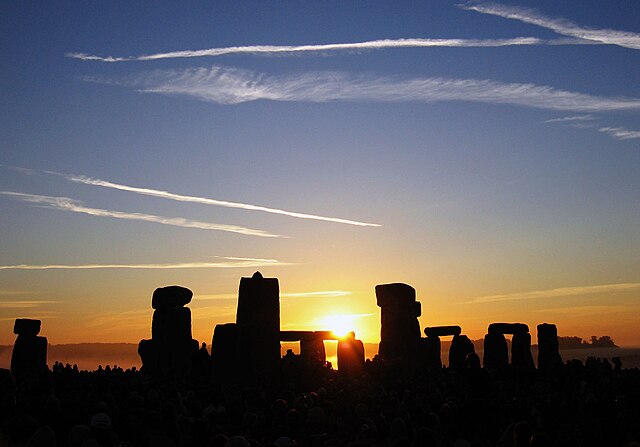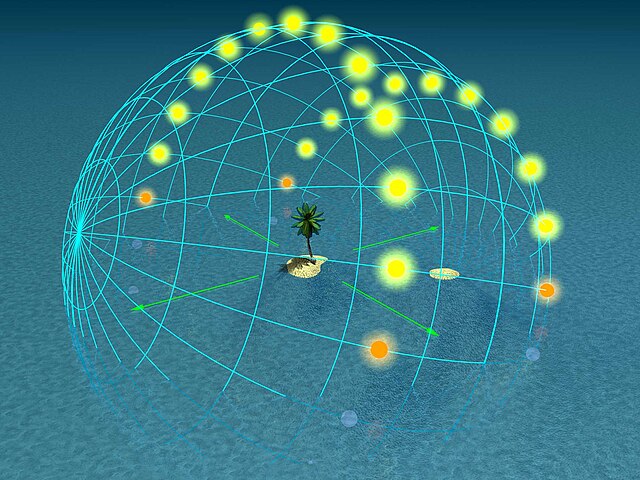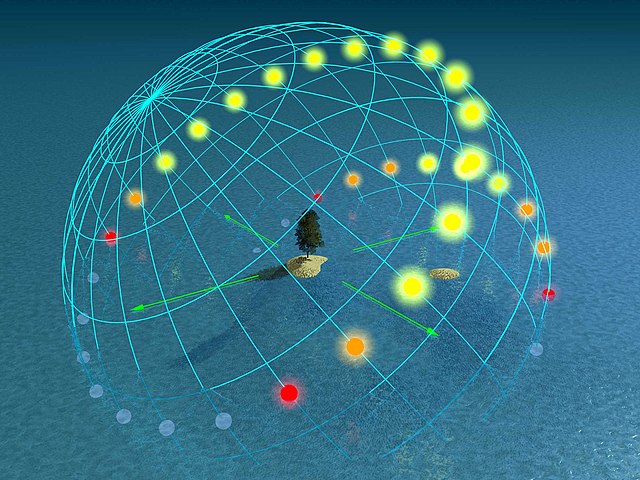A solstice is the time when the Sun reaches its most northerly or southerly excursion relative to the celestial equator on the celestial sphere. Two solstices occur annually, around June 20–22 and December 20–22. In many countries, the seasons of the year are determined by the solstices and the equinoxes.
The globe on an equirectangular projection to show the amount of reflected sunlight at southern and northern summer solstices, respectively (watts / m2).
2005 Summer solstice sunrise over Stonehenge
A solargraph taken from the Atacama Pathfinder Experiment at the Llano de Chajnantor Observatory in the southern hemisphere. This is a long-exposure photograph, with the image exposed for six months in a direction facing east of north, from mid-December 2009 until the southern winter solstice in June 2010. The Sun's path each day can be seen from right to left in this image across the sky; the path of the following day runs slightly lower until the day of the winter solstice, whose path is the lowest one in the image.
Sun path, sometimes also called day arc, refers to the daily and seasonal arc-like path that the Sun appears to follow across the sky as the Earth rotates and orbits the Sun. The Sun's path affects the length of daytime experienced and amount of daylight received along a certain latitude during a given season.
This solargraph exposed over the course of a year shows the Sun's paths of diurnal motion, as seen from Budapest in 2014.
0° latitude (the Equator)
20° latitude
50° latitude







